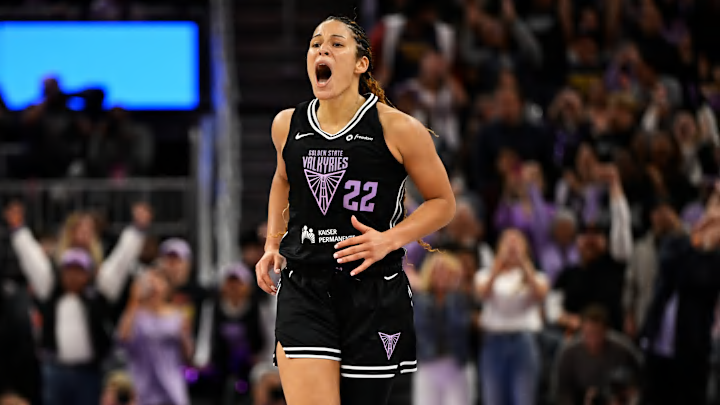Even before the start of the season, the Valkyries profiled as a team that would play hard defensively, run a lot, and fire away from three. The Valkyries have lived up to those expectations, and it has led to plenty of success despite some major struggles from three to start the season.
While Natalie Nakase’s team was never afraid to shoot threes, making them was a problem in the Valkyries’ early games. Now, Golden State has turned things around and improved significantly from long range.
Golden State struggled to make threes early in the season
The Valkyries started the season with two wins and three losses in their first five games. One reason for the losing record was that the Valkyries had to face New York twice. Another was the team’s horrendous 3-point shooting.
The Valkyries only shot more than 31 percent in one game over that stretch. In two games, they didn’t even hit the 26 percent mark. After that, Golden State had a few good games from three, shooting 42.3 percent against the Lynx and 35.7 percent versus the Aces.
Nevertheless, the Valkyries still ranked 13th in 3-point percentage in May and 12th in June. For the whole season, they only rank twelfth.
The 3-point shooting has improved recently
Recently, the Valkyries’ shooting has been much improved. In four of their last five games, Nakase’s squad shot at least 34 percent from three. With a total of 36 percent, the Valkyries average the third-best 3-point percentage in the WNBA. The only teams ahead of them are Chicago (surprisingly) and Phoenix.
They may have lost two tough games against Minnesota and Atlanta, but the Valkyries’ improved shooting will be a major advantage if they can keep it up. After all, the Valkyries attempt around 30 3-pointers per game, the most in the league. Making a solid percentage of those looks will immediately boost the team’s offense.
It will also help make up for one of the Valkyries’ biggest disadvantages. Golden State doesn’t have a lot of size in the frontcourt. The easiest way to combat that, especially against taller teams, is to space the floor and draw defenders away from the basket. Doing that successfully will create room for Temi Fagbenle, Monique Billings, and Iliana Rupert once she joins the team to go to work in the paint. It will also create driving lanes for Tiffany Hayes, Veronica Burton, Kayla Thornton, and the other guards on the team.
